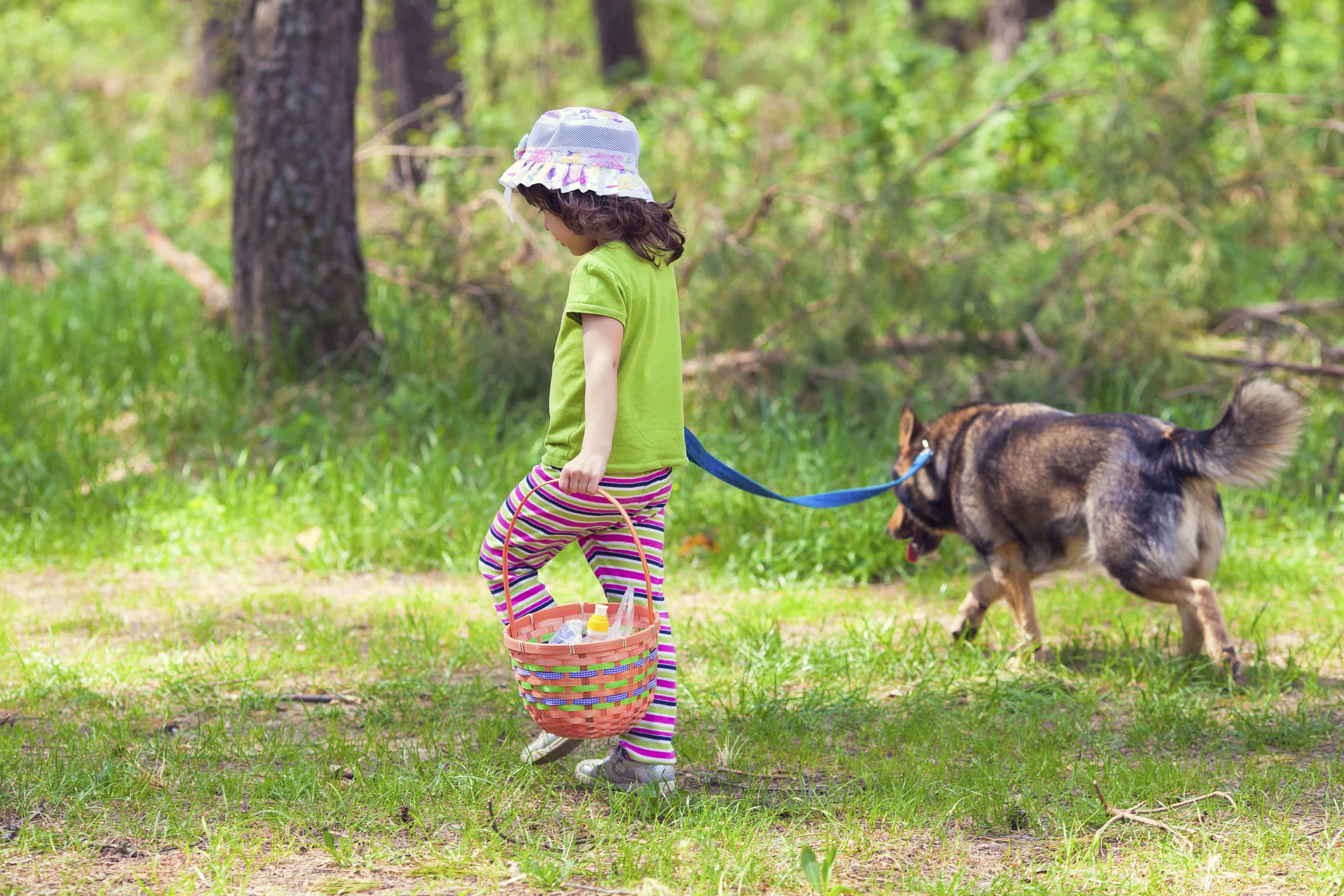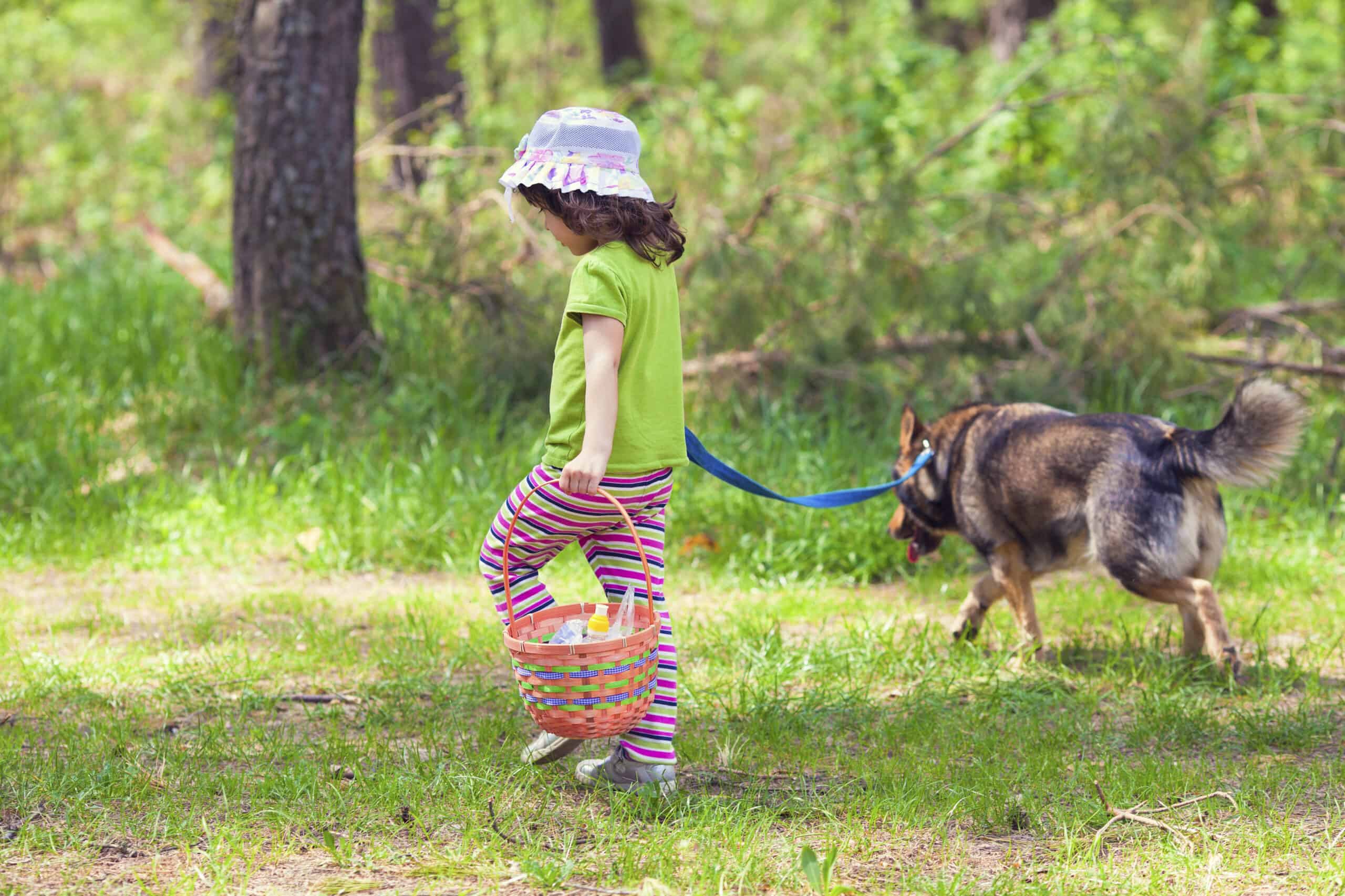A Walk in the Park: Dog Walking Safety 101
 Besides food, water, and snuggles, exercise is the best gift you can give your pet. Whether it’s a walk through the neighborhood on a leash or a trip to the dog park, regular exercise is a vital part of your dog’s overall health and well being.
Besides food, water, and snuggles, exercise is the best gift you can give your pet. Whether it’s a walk through the neighborhood on a leash or a trip to the dog park, regular exercise is a vital part of your dog’s overall health and well being.
Safety First
Even a relatively simple activity such as going for a walk carries a risk of injury for your dog. The following tips will help keep your pup safe while still enjoying the benefits of regular dog walking:
- Paw Pads – Your dog’s paw pads are more sensitive than they appear. Avoid surfaces that could injure the pad such as hot asphalt, dirt, or sand. If you’re unsure as to whether it’s too hot, test the surface temperature with the palm of your hand or your bare foot. If it’s too hot for you, it’s too hot for your pet. Steer clear of alleyways or anywhere there is broken glass or other debris that could be hazardous to your dog’s paws, too.
- Stranger Danger – Keep your pup away from dogs you don’t know, especially those that are off-leash. An unfamiliar dog may be aggressive or could be carrying a disease.
- Watch The Weather – If it’s too hot for you, it’s too hot for your pooch. Limit summer walks to early morning and evening hours, when the sun is less intense.
Dog Parks: Yay, or Nay?
The purpose of a dog park is to offer an area where dogs can freely roam off-leash. Dog parks can provide your dog with physical and mental stimulation as well as plenty of opportunities for socializing. The four-legged set aren’t the only ones who benefit from a trip to a dog park, however. Pet parents can enjoy socializing with each other, playing and bonding with their dogs and practicing off-leash training skills.
Is The Dog Park Right For Your Dog? – The ideal candidate for a trip to the dog park is a dog who is healthy, spayed or neutered, and enjoys the company of other dogs and people. If your dog is overly shy or aggressive or has health issues then a dog park may not be appropriate. Unvaccinated puppies should never visit a dog park, as the risk for disease transmission are higher at dog parks due to the volume of dogs your puppy could come into contact with.
What To Look For – Ideally, you should visit a dog park without your dog to make sure that it’s the right park for both of you. A dog park should have the following traits:
- Enough square footage for dogs to freely run without getting too crowded, as crowding can lead to tension which can lead to fights
- Trash cans and bags available for easy waste cleanup
- Secure fencing and gates, this is important even if you trust your dog to come when called
- Drinking water and shade
- Separate exercise area for smaller or younger dogs
Behavior Police – It’s important to keep a close eye on your pup at all times and to monitor his or her behavior in regards to the other dogs in the park. Keep your dog from “clumping” together with other dogs by having him or her follow you to different parts of the park. Stop a fight before it starts by removing your dog from an interaction with another dog that seems to be more tense than playful.
Questions? Give us a call! We can help you to determine if your pooch is healthy enough for the dog park and make sure he or she is up to date on vaccines and parasite preventatives.

